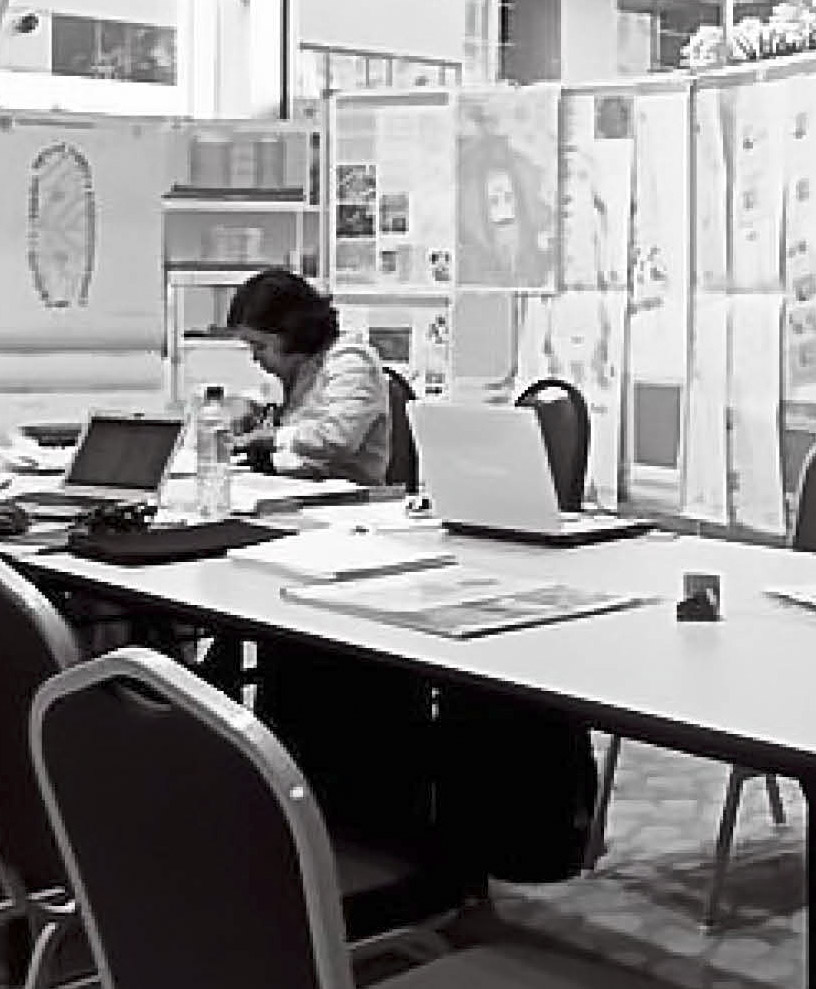MBES 2113 SPACE SYNTAX : Architectural Spatial Analysis
This course introduces Space Syntax as a set of techniques for the analysis of spatial configurations of all kinds, especially where spatial configuration seems to be a significant aspect of human affairs, as it is in buildings and cities. When first started, SS is originally conceived as a tool to help architects simulate the likely effects of their building designs, it has since grown to become a tool used around the world in a variety of research areas and design applications. It has been extensively applied in the fields of architecture, interior design, urban design, planning, transportation, archaeology, psychology and much more.
1.TEACHING METHODOLOGY
Lecture Inputs, Site studies, and observation, Data Computation in Computer Lab. The students will venture to develop the framework and method of analysis in relation to the space syntax area of studies. The students will have the option to integrate the SS technique of analysis with individual’s studio design work after which will make his or her own scholastic approach to the issue being debated. Depending on the specific topic of interest, ultimately, each student is to undertake an independent, supervised study through content analysis or a limited field observation and they need to present the findings in a final written report (10,000 – 12,000 words or about 50 pages).
2. LEARNING OUTCOME
2.1 Able to discuss knowledge in writing the social, physical and spatial aspects in the field of architecture, urban design, planning and built environment field of studies.
2.2 Able to design and apply the methodology, modus operandi and operational technique for the deliberating the topic in the architecture discipline.
2.3 Able to critically analyze and integrate the theoretical and practical aspects of the stated field in a syntactical manner (addressing the spatial principles being adopted).
2.4 Able to organize, plan and execute systematic research activities in relation to space syntax theory of spatial configuration.
4. REFERENCES
The Social Logic of Space (Cambridge University Press, 1984) by Bill Hillier and Julienne Hanson
Space is the Machine (Cambridge University Press, 1996) by Bill Hillier.
“The city as one thing” by Professor Bill Hillier and Laura Vaughan.
Amos Rapoport Culture, Architecture, and Design, 2005
Theories and Manifestos of Contemporary Architecture, edited by Charles Jencks and Karl Kropf, Wiley‐Academy, 1997
Leon Krier, “Building and Architecture”, and “The Only Path for Architecture”
Jurgen Habermas, “Modern and Postmodern Architecture
Michael Hays, Architecture Theory since 1968
Bernard, H. Russell. 2000. Social Research Methods: Qualitative and Quantitative Approaches. Thousand Oaks: Sage Publications.
Creswell, John W. 2003. Research Design: Qualitative, Quantitative and Mixed Method Approaches. Thousand Oaks : Sage Publications.
Gerring, John. 2001. Social Science Methodology: A Criterial Framework. New York : Cambridge University Press.
Groat, L. and D. Wang (2002). Architectural Research Methods. New York, John Wiley & Sons, Inc.
Guba E.G. and Lincoln Y.S. 1998. The Landscape of Qualitative Research. Edited by N.K Denzin and Y.S Lincoln. Thousand Oaks: Sage Publications.
Hodder, I .1994. Handbook of Qualitative Research, Edited by Denzin N.K and Lincoln, Y.S. Thousand Oaks: Sage Publications.
Kuhn, T. S. (1996). The Structure of Scientific Revolutions. Chicago, the University of Chicago Press.
Syed Mahdzar, S.S. ; (2008) Sociability vs accessibility urban street life. Doctoral thesis, The Bartlett UCL, University of London, UK Rozakis, L. E. (2004) The Complete Idiot’s Guide to Research Methods, Alpha (Penguin Group) Inc., USA
Walliman, Nicholas. S. R. 2006. Social Research Methods, London: Sage Publications.
Yin, Robert K .2003. Applications of Case Study Research. Thousand Oaks: Sage Publication
Zeisel, J. (2006). Inquiry by Design. New York, W.W. Norton & Company.




